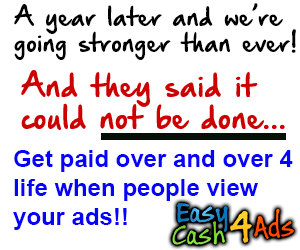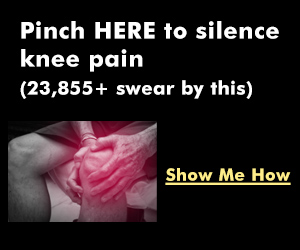 – There is one phrase that I hear parents saying to their babies or toddlers all the time when they’re trying to stop an undesirable behavior. But, what that parent doesn’t realize is that one phrase is actually doing the complete opposite. It is encouraging their baby or toddler to continue to do that behavior and also do it more often. So, in this video, I’m going to tell you what that one phrase is that you should never say, and more importantly, what you should do and say instead. But before we cover what that phrase is, make sure you click on that free PDF document in the description box below; to get a copy of the developmental milestones you can be expecting your baby’s first year of life.
– There is one phrase that I hear parents saying to their babies or toddlers all the time when they’re trying to stop an undesirable behavior. But, what that parent doesn’t realize is that one phrase is actually doing the complete opposite. It is encouraging their baby or toddler to continue to do that behavior and also do it more often. So, in this video, I’m going to tell you what that one phrase is that you should never say, and more importantly, what you should do and say instead. But before we cover what that phrase is, make sure you click on that free PDF document in the description box below; to get a copy of the developmental milestones you can be expecting your baby’s first year of life.
So what is the phrase that parents are saying all the time, which is going to actually increase their likelihood of their baby and toddler engaging in undesirable behaviors? It is when they say, no, stop, or don’t do something. So, in your day-to-day life, that might look like, stop throwing the food off the table, don’t throw your toys, no hitting mommy, plus lots of other different varieties of the same thing.
But this phrase doesn’t work for a multiple reason. Firstly, when we say this phrase, we as parents generally use really, really loud voices, lots of animated facial expressions, our arms are often waving out of control, and we often stop whatever we’re doing to rush over to our little one to stop them engaging in unsafe or dangerous behaviors.
Now, of course there’s going to be times when you need to rush over to your little one to ensure their safety, but, rushing over to your little one, combined with that big reaction, so the yelling, the facial expressions and the arm movements actually gives you a little one lots of attention and what they see through their eyes, is mom or dad or whoever the adult is, is being really funny.
They got really funny facial features; they’re making lots of movement with their arms and their voice sounds really cool. So for example, if your little one is sitting at the table, eating some food and they’re eating quite well, you might get up from the table and go and make yourself a cup of tea. But in that moment, your little one might be exploring with the food and just accidentally or deliberately throw that food over the edge to see what happens to see what the food does when it lands but what they see from you, is you yell at them across the room saying, don’t throw your food or stop throwing your food. You run back to the table and then you sit down at the table and engage with them and stay at the table until they finish eating to ensure they don’t make a mess.
But in doing that, you’ve actually reinforced that behavior. You haven’t told you a little while what to do, but you’ve told them that by doing this action of dropping the food, mum or dad is going to come rushing back to the table and then stay with me until I’ve finished and give me that undivided attention.
The other reason this phrase doesn’t work is because it doesn’t tell them what to do so often that undesirable behavior is happening because they either don’t know how to play with the toy or the item, they don’t know what’s expected of them, or they don’t have the words to tell you what they want. So, they can’t tell you that they’re finished, or they’re frustrated or they’re angry and unless you teach them how to play with the toy or what other words or actions can be used, they’re going to continue to do that undesirable behavior. Also, kids at this age are learning what words mean.
They don’t yet know them and if you are constantly using the same phrase over and over, so saying no hitting, no hitting, no hitting every time they hit, what they are learning and what they might start to associate is the phrase no hitting means that I actually hit because that’s what I do.
 Every time mommy says no hitting, I’m hitting her so if I hear no hitting what mommy wants me to do, or what daddy wants me to do, is hit. So, what you want to do is to stop an undesirable behavior happening is to actually start to teach them what to do. So, in the situation where your little one is doing something that you don’t want, the very first thing that you need to do is remain calm. So, we don’t want to inadvertently encourage that behavior by having those big reactions so that yelling, lots of facial expressions and lots of arm movements.
Every time mommy says no hitting, I’m hitting her so if I hear no hitting what mommy wants me to do, or what daddy wants me to do, is hit. So, what you want to do is to stop an undesirable behavior happening is to actually start to teach them what to do. So, in the situation where your little one is doing something that you don’t want, the very first thing that you need to do is remain calm. So, we don’t want to inadvertently encourage that behavior by having those big reactions so that yelling, lots of facial expressions and lots of arm movements.
You just walk over to your little one, and using a calm voice and a neutral face, what you would do is tell them what to do and it’s through telling them what to do that you’re going to give them the skills to do something else instead of that undesirable behavior. So if for example, your little one is throwing blocks across the room because they’re finished playing with the blocks, what you would do is you walk across to them, you would get down on their level so that might mean you’re crouching, and you would say, it’s finished blocks go in the container until they start to copy you. Another example is if your little one is heating you, what you could do instead is in a really calm voice, say, “pat, pat mummy,” and you would pat mummy and if they don’t do that, then that is when you would grab their hand gently and you would start to use their hand to stroke your arm.
And when they do that desired behavior, what you winna do is give them lots of praise and attention so that might be smiling and might be clapping, and by doing that, what you are doing is encouraging your little one to do that behavior again. Now, if your little one in that moment, doesn’t wanna do what you’re recommending instead so with the alternative activity, what you can use is natural consequences in that situation.
Generally natural consequences are better and that is because they are quite quick, they’re relative, and they’re easier for a baby and a toddler to understand. So, if you’re a little one once you’ve modeled to them that they can play with the blocks by putting the blocks on top of each other, rather than throwing them or they place them in the box if they’re finished, and they still continue to throw the blocks, then you could simply approach them in a neutral voice.
You would just say, blocks are for building, not for throwing, blocks are going away and then you just put the blocks away and what your little one soon learns is that every time I engage in throwing the blocks, those blocks go away and then I’m no longer able to play with them and that is a natural consequence of that action and it will soon help them learn that if they winna keep playing with the toys or the blocks, they need to use them appropriately otherwise mom or dad is going to put those away.
Now, if your little one is throwing food off the highchair, or the table, and it’s something you winna stop, then click on this video here where I walk you through all the steps on how to address this behavior, so it does stop. Remember to click on that free PDF document in the description box below, and I will see you next week where I’ll share more parenting tips and tricks.
https://www.website.ws//kvmlm2/index.dhtml?sponsor=yosekbaez60&template=11
Main VSL (Highest EPC) https://hop.clickbank.net/?affiliate=aff61bz25k&vendor=soundhealr&tid=
Monetizing & utilizing your websites (April 2018) 
[table id=2 /]
Read More: HOW I became a free human and at what cost (2 year update)
Discover more from Marketing Revolution
Subscribe to get the latest posts sent to your email.


























